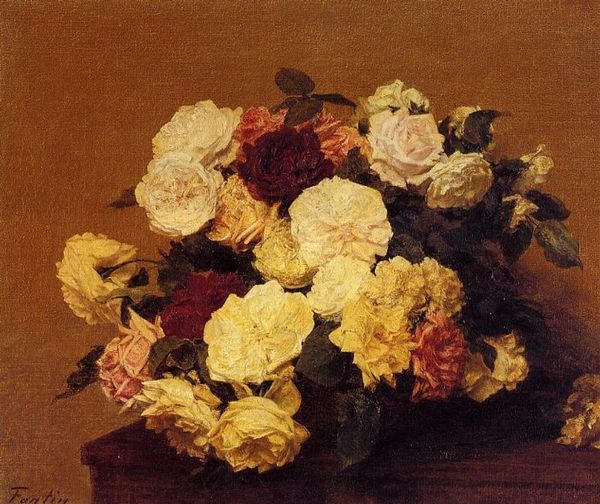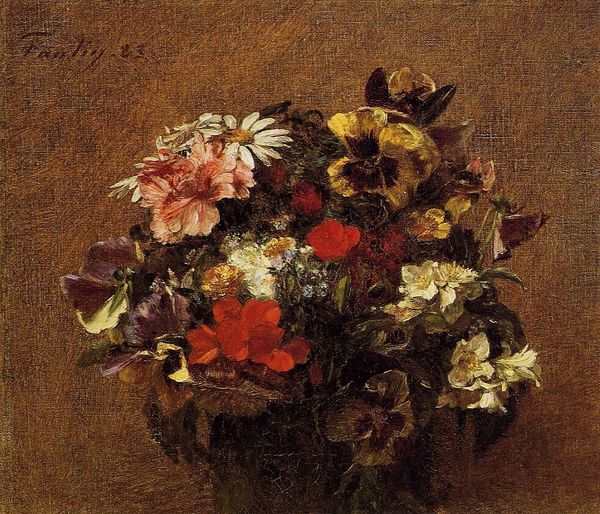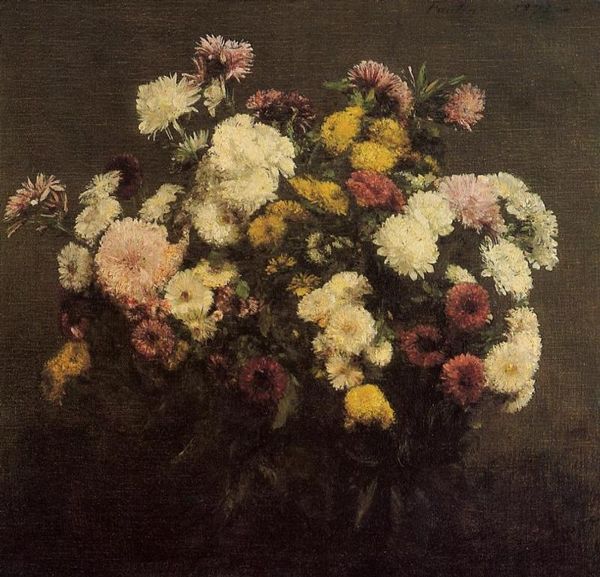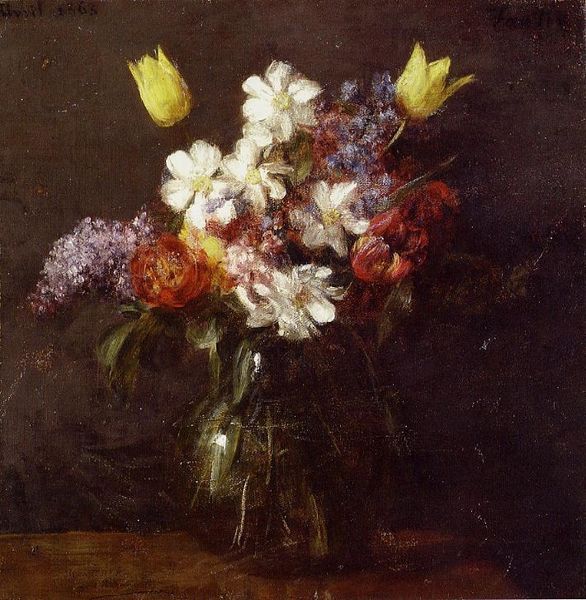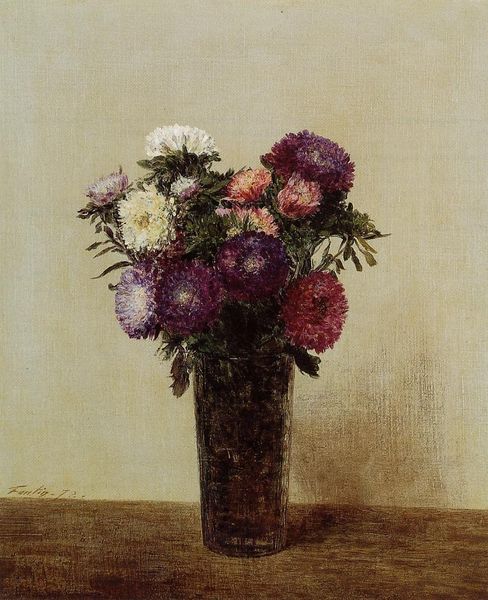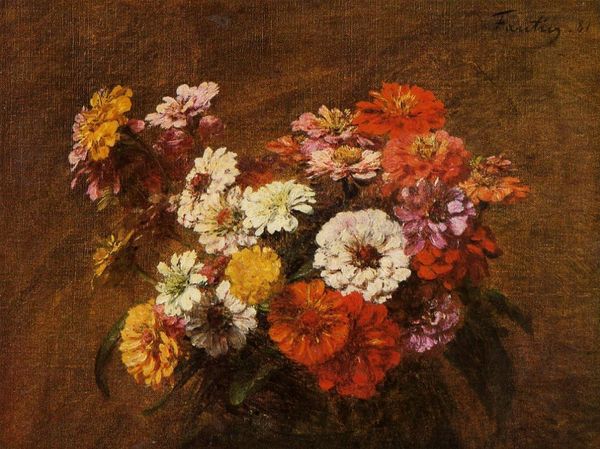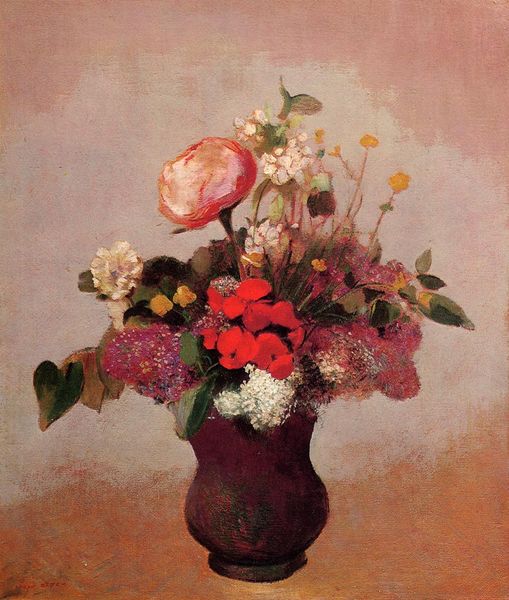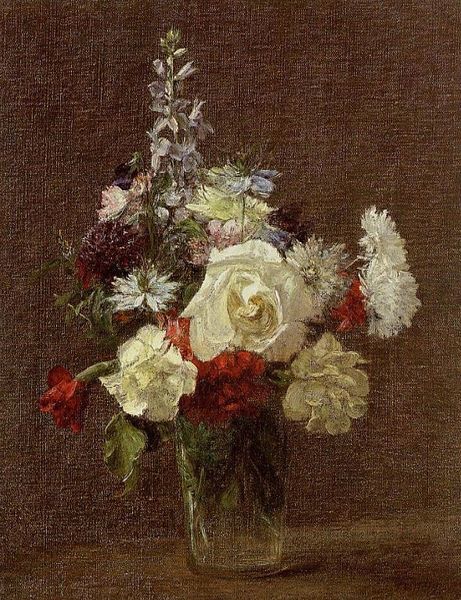
Copyright: Public domain
Curator: This is Henri Fantin-Latour’s "Flowers Poppies," painted in 1883. It’s an oil painting and a striking example of his still-life work, though less known than some of his group portraits. Editor: I’m immediately struck by the deep, almost somber mood it evokes. The dark background really makes those jewel-toned flowers pop, or rather, smolder. Curator: It's interesting you use the word "smolder." Fantin-Latour had a complicated relationship with the avant-garde. He painted still lifes like this for income, largely for bourgeois patrons in England, and he faced criticism from some for not fully embracing Impressionism. They wanted more modern subjects and bolder techniques. Editor: But there’s a clear physicality here, though. Look at the visible brushstrokes, especially on those poppies! The impasto gives them a tangible presence, like you could almost reach out and touch their velvety petals. That engagement with materiality shouldn't be dismissed so readily. It's craft, it's labor... Curator: Absolutely, but what’s intriguing is how these works helped fund his more ambitious projects, like his commemorative group portraits of artists and musicians. The market demanded these floral paintings, which then subsidized his dedication to portraying artistic communities. He had complex social circles, deeply influenced by Wagnerian ideals. Editor: So, the act of making becomes bound up in an economic cycle. Fantin-Latour provided a desirable, consumable product, that enabled other kinds of art. This gives this picture extra weight - the vase, possibly produced in a factory, holding the blooms so painstakingly created, speak to broader economic issues... Curator: Precisely. The popularity of such paintings, disseminated in exhibitions and print reproductions, helped shape the public perception of French art at the time, solidifying certain tastes and conventions. Editor: A very tangible link between a painter's hand, capitalist structures, and the aesthetic conditioning of the art-consuming public, then. Food for thought. Curator: Indeed, and remembering those social frameworks enriches the picture's beauty even more. Editor: It's shifted my understanding of value, the materials, the maker, the market. Thanks.
Comments
No comments
Be the first to comment and join the conversation on the ultimate creative platform.



